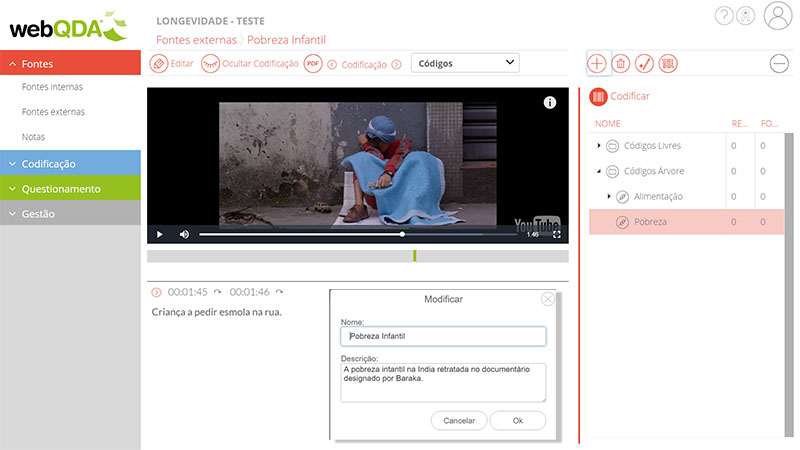
By Katia Godoi, professor at UNIGRAN – Brazil
The text presented here is based on the editorial written for the special edition of Cadernos de Educação, Tecnologia e Sociedade, whose main theme is the “Methodological Approach of Netnography in Education: shortening the distances between time and space”.
This topic presents an initial analysis of the methodological approach of netnography. To that end, we discuss the definition of the term, which according to Kozinets (2014) is a specialized form of ethnography, which uses computer-mediated communications as a source of data to arrive at the understanding and ethnographic representation of a cultural phenomenon in, by and for the internet. The specificity of the “in”, “by” and “for” the internet is related to the direction of the cultural phenomenon. The phenomenon begins in the face-to-face world and goes to the virtual world, begins in the virtual world and spreads to the face-to-face world or establishes itself exclusively in the virtual world. Thus, we could have at least three categories of cultural contexts for netnography: i) from face-to-face to virtual, ii) from virtual to face-to-face, iii) exclusively virtual. In this sense, this approach can be used for studies of discussion forums, newsgroups, blogs, social networks, online communities, among other online spaces.
The methodology of netnography, initially explored by Marketing (KOZINETS, 1998, 2002) and Communication (HINE, 2004), has been gaining ground in other areas of knowledge, such as Education, which has contributed to the discussion and use of this methodology, presenting the forms of studies that cover netnography and its procedures.
As in other research methodologies, netnography has a body of procedures. These, in turn, are dynamic and can happen simultaneously. Thus, according to Kozinets (2002, 2014), the netnographer has fundamental decisions to make before the first contact with an online community. The entry, that is, the first procedure refers to the cultural entrée, in which decisions are made about the preparation for the field work, such as the identification of the online community, topics and issues that will be investigated, formulation of the research question, in addition to how the researcher will present him/herself and will be included in the research group. The researcher should make the point of observation clear when making considerations about his object, because his/her positioning can interfere in the way the data will be collected and analyzed.
The second is data collection. For Kozinets (2014), there are three important types of data collection: The first consists of directly copying computer-mediated data from the page of the observed group (e.g. virtual communities, blogs, social networks), texts, images, audios or videos, that is, data whose creation and mediation the researcher is not directly involved in. The second refers to the data the researcher creates through interaction with community members, for example e-mail interviews, chat, instant messaging, and other digital media. The third type of collection refers to the field notes of the researcher, about the communicational practices of the members of the communities, their interactions and interpretations, as well as the researcher’s own participation and sense of belonging in the group.
The analysis and interpretation contemplates the third procedure, which resides in the process of interpreting the data collected and produced from the participation and the netnographic observation, from the required literature and the emerging data. In the steps of organizing, collecting and analyzing data, the researcher can use in his/her research studies several types of tools, such as Google Scholar, as well as software packages for the organization and analysis of qualitative data, as is the case of webQDA.
Regarding research ethics, the fourth procedure that the netnographer must ensure is what Kozinets (2014) points out as important aspects to ensure the suitability of the research: to identify, inform and dialogue with the participants about the research; request appropriate permissions, ensuring anonymity; obtain consent when necessary; citing and giving due credit to the research participants.
Finally, the fifth procedure is related to the member check. Kozinetz (2014) proposes the validation of the research, to present the interpretations about the observations made to the participants, besides listening to their opinions about what was written and whether it is consistent with the context they live in. From this exchange, one can arrive at insights and conclusions beyond those observed in the field.
The fact that webQDA allows you to analyze videos, available, for example, on a YouTube channel, “facilitates” the application of a netnographic approach. In this sense, the researcher should use the “External Source”, inserting only the link of the video, in which it is possible to create segments of text, from transcriptions, descriptions and / or interpretations, or to elaborate a combination of these elements in several pieces from the video. It is also worth mentioning that the text segments are intended to be encoded in the respective categories for purposes of analysis (see figure).

Figure 1 – Video analysis through the External Source functionality
From this body of procedures and the possibility of video analysis in webQDA, we can understand that netnography can shorten the distances between time and space, due to the very dynamics of the internet, in which social groups are arranged in a network. Such groups can work both in an online space, and coexist outside it, in an offline space. In this sense, the premises of ethnography, which are the investigative character and observation of the reality of the other, remain present in the netnographic approach.
References
Barros, V. F. de A., Costa, A. P., Silva, K. A. de G. e, Castro, P. A. de, & Pais, S. (2017). Abordagem Metolológica da Netnografia na Educação: encurtar as distâncias entre tempo e espaço (Carta Editorial). Cadernos de Educação, Tecnologia E Sociedade, 10(1), 1–8. https://doi.org/https://dx.doi.org/10.14571/cets.v10.n1
HINE, C. Etnografía virtual. México: Editorial UOC, 2004. Disponível em: <https://seminariosocioantropologia.files.wordpress.com/2014/03/hine-christine-etnografia-virtual-uoc.pdf>. Acesso em: Jan. 2017.
KOZINETS, R. On netnography: inicial reflections on consumer research investigations of cyberculture. Advances in Consumer Research, 1998, v. 25, pp. 366-371. Disponível em: <https://www.acrwebsite.org/search/view-conference-proceedings.aspx?Id=8180>. Acesso em: Jan. 2017.
KOZINETS, R. The field behind the screen: using netnography for marketing research in online communities. Journal of marketing research, 2002, v. 39, n. 1, pp. 61-72.
KOZINETS, R. V.. Netnografia: Realizando pesquisa etnográfica online. Porto Alegre: Penso, 2014.





Leave a comment